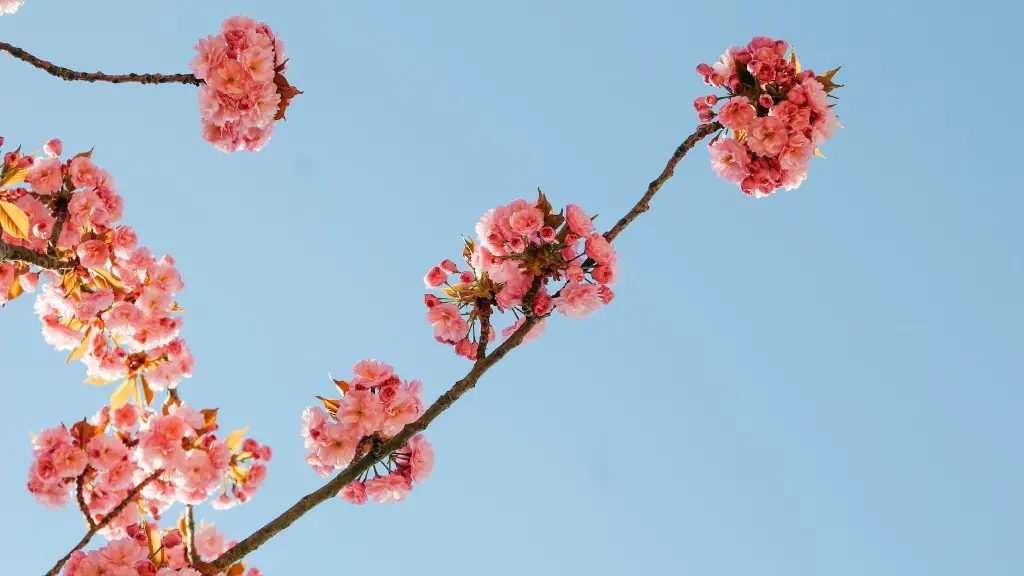Once you have planted a young apple tree, regular pruning becomes essential for its development. Any type of unbalanced growth can lead to stillbirth for a young tree. When it comes to understanding when to prune a young apple tree, timing is key. When to prune is better interpreted as “when should a tree receive its initial pruning”, since regular pruning will become necessary for the duration of the tree’s life. It’s important to note that pruning is associated with growth, not maintenance. If pruning is done correctly, your young apple tree will develop a healthy shape for the rest of its life.
The best time to prune a young apple tree is during its first winter, after it is planted. This will normalise the shape of the sapling and increase branching. The right time to prune depends on the species of tree, but in general, pruning should occur any time between November and March. Another indicator that it’s the right time to prune is if the leaves begin falling off naturally. If this happens, it’s the right time to prune.
The process of pruning a young apple tree is long, and there’s no one-size-fits-all approach. When shaping a young apple tree, it is essential to remember to keep the tip buds shorter than lateral ones. Also, when pruning away excess branches and stems, ensure that you are doing it in a way that maintains the balance of the tree. Lastly, never remove more than 1/3rd of the apple tree’s total branches in one go.
When it comes to pruning young apple trees, it is important to address both structural and aesthetic aspects. All fruit-producing wood should be safely retained during pruning. Young trees should never be heavily pruned in one go, as it will slow down their development and become counterproductive in the long run. It’s also important to watch out for diseased or weakened branches, which should be pruned to avoid the spread of disease.
When pruning a young apple tree, it is important to use sterilised tools. This will prevent the spread of diseases. Depending on the size of the tree, one should either use a pole pruner or lopping shears. The former will be necessary to reach branches at the top of the tree that are hard to reach. The latter should suffice if pruning needs are limited to the lower parts of the tree.
Finally, pruning a young apple tree should always be done with safety precautions in mind. No one should prune a tree with bare hands, for example. Always wear protective gloves, eye protection and clothing that won’t get snagged easily. Finally, when disposing of pruned branches, take the necessary precautions and dispose of them safely.
The Main Goal of Pruning a Young Apple Tree
The main goal of pruning a young apple tree is to restore balance and encourage growth in the right direction. In doing so, the tree will develop a stronger structure and better support its future fruit yield. This should be done while keeping the tip of the budding and lateral branches as balanced as possible so that the tree can develop a strong framework.
Benefits of Pruning a Young Apple Tree
One of the most significant benefits of pruning a young apple tree is that it encourages more vibrant and prolific fruiting. By pruning a young tree, it will maintain a healthier, more aesthetically pleasing shape. Additionally, it reduces competition and increases the health of a young tree by allowing it to develop stronger roots and limbs. Pruning a young apple tree can also help it better adapted to weather changes and protect it from potential damage.
Proper Pruning Techniques for a Young Apple Tree
For an optimal pruning outcome, it’s important to have a wide understanding of general tree health principles and the techniques associated with pruning a young apple tree. An effective pruning technique includes not pruning too much or too often. This can potentially slow down and stun growth. As such, pruning should only be done when it is necessary. When pruning, one should remember to keep branches and stems balanced and the tip of buds shorter than lateral ones. Pruning should be done with sterilised tools and the tree’s structure should remain intact.
Pruning is an Ongoing Process for a Young Apple Tree’s Lifecycle
Pruning a young apple tree is just the beginning of a lifelong journey. Pruning is an ongoing process during the tree’s lifecycle. As a result of pruning, growth should occur each year. It’s important to remember that the size of the tree determines the number of branches and the timings of pruning. If a tree is too large and heavy, it should be pruned earlier than it would be if it was smaller. Overall, one should prune a young apple tree over a period of years and not in one go.
The Constant Maintenance of a Young Apple Tree
Regular pruning is essential for the continuous structural and health maintenance of a young apple tree. It helps the tree have a balanced growth and enhances its capacity to produce good yield for a longer period. Pruning should be done on an ongoing basis and should never be neglected, as the buds and shoots in young trees are tender, and if left unchecked, the tree can become unstable. Therefore, regular pruning is essential for the strength of a young apple tree.
Scientific Principles Behind Pruning a Young Apple Tree
The principles behind pruning a young apple tree are based on the plant’s physiology. When pruning a tree, the cuts induce a flood of hormones that will cause the tree to sprout buds and grow thicker branches. The objective of pruning is to create a nutritious environment for maximum stem and bud development. This process is also known as structural pruning, and it involves removing excess branches and shoots so that the tree can develop with more stability and health.
Pruning a Young Apple Tree for a Better Yield
The amount of yield a young apple tree can produce depends heavily on the tree’s pruning and health maintenance. The yield produced by a young apple tree can be maximised if it is pruned in the correct way. Correct tree pruning will also help encourage new fruit production as well as an improved flower formation. This can help the tree yield healthier fruit due to increased cropping efficiency.


